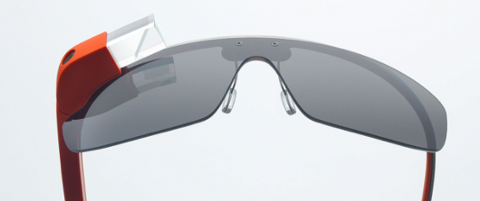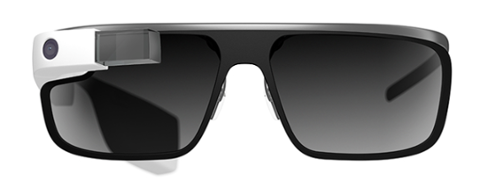Intel Trying to Revive "Smart" Eyeglasses Market
Are “smart” eyeglasses ready for a comeback? Intel is preparing to launch Vaunt, a pair of plastic eyeglasses with hardware built into the stems. The device leverages a low-powered laser to project a monochromatic image into the user’s right eye. According to The Verge’s Dieter Bohn, who reviewed a prototype, the display (“a rectangle of red text and icons down in the lower right of your visual field”) disappears when you glance away. Intel envisions the Vaunt as a contextual tool, feeding specific information (via a Bluetooth connection to an iOS or Android device) to the wearer at exactly the right moment. The chipmaker’s designers also focused on making the technology as unobtrusive as possible; there’s a world of difference between the Vaunt and Google Glass, which featured an oversized stem stuffed with processors and other hardware, along with a small screen prominently embedded in the right lens. Intel’s strategists likely regard Google Glass as an example of how not to launch a wearable. When Glass debuted (to great fanfare) in 2013, some pundits expected that it would kick off a new era in wearable technology. Within a year or so, though, Glass had floundered; many people found the hardware obtrusive, its built-in camera creepy, and its price insane ($1,500 for the developer version). (In mid-2017, Google again tried reviving Glass, this time as an industrial device customized for various businesses such as manufacturing and healthcare. The “evolved” Glass is lightweight, with an emphasis on battery life, but it’s an open question whether the device can become even semi-ubiquitous in this new, professional context.) With “smart” eyeglasses dead, however temporarily, the tech industry shifted to smartwatches and other wearables that attach to the wrist. These enjoyed more success, although the small screens and relatively low-powered processors have limited the growth of a surrounding app ecosystem. Ironically, Intel is ushering this device into the world just as it plans to step back from augmented reality (AR). Earlier this month, the company announced that it would sell a majority stake in its nascent AR business, seeking as much as $350 million (according to Bloomberg). So if the Vaunt hits the marketplace and proves a hit, Intel may not even become the primary beneficiary; and if it’s a failure, then Intel has saddled some investors with a pre-made dud. Intel plans on launching easy access and an SDK for developers later this year. But will developers actually want to build apps for the hardware? The monochromatic screen and low power might turn off many builders who like constructing complex products; yet for those who are interested in crafting purely utilitarian apps, simple in purpose and code-base, the platform could hold a certain appeal.



